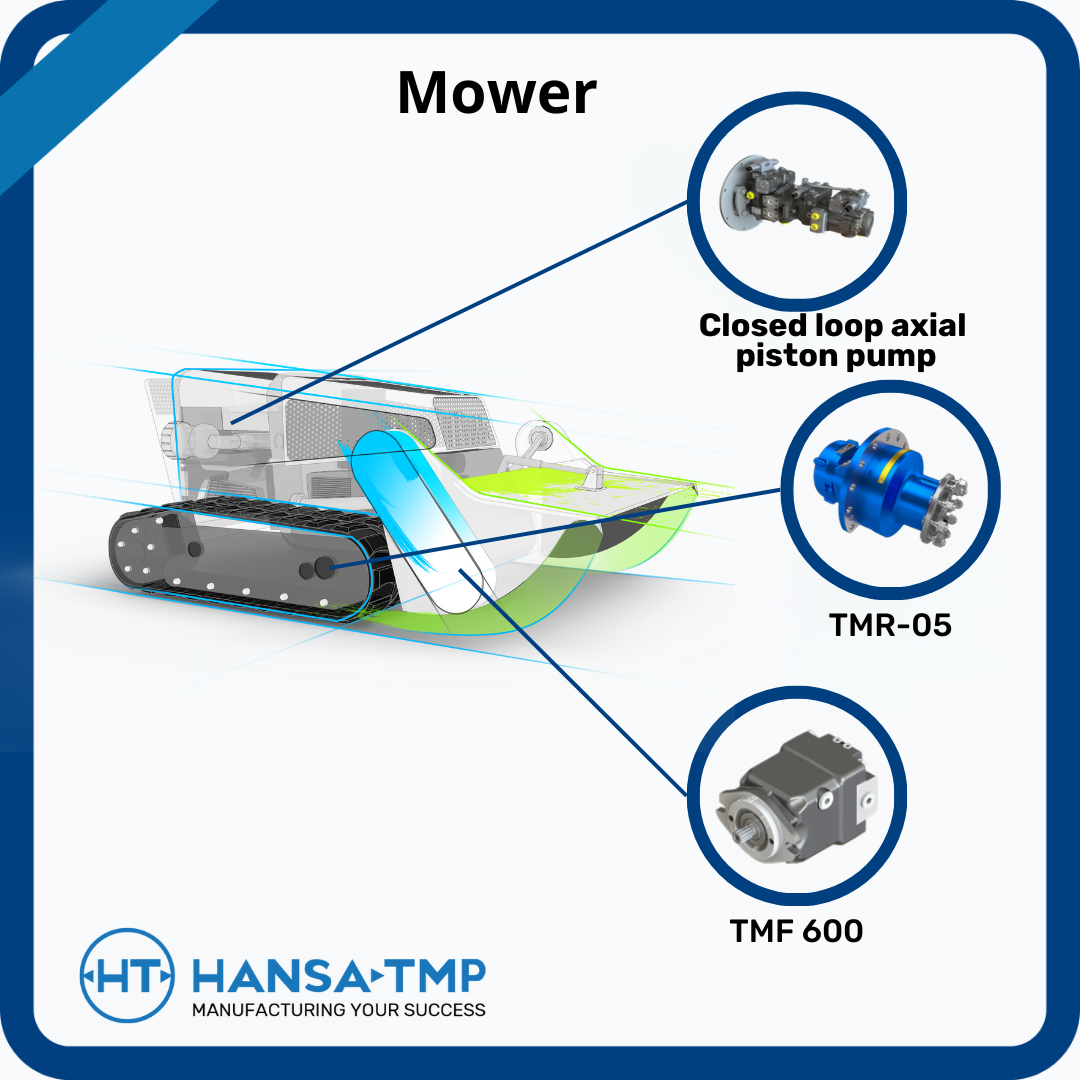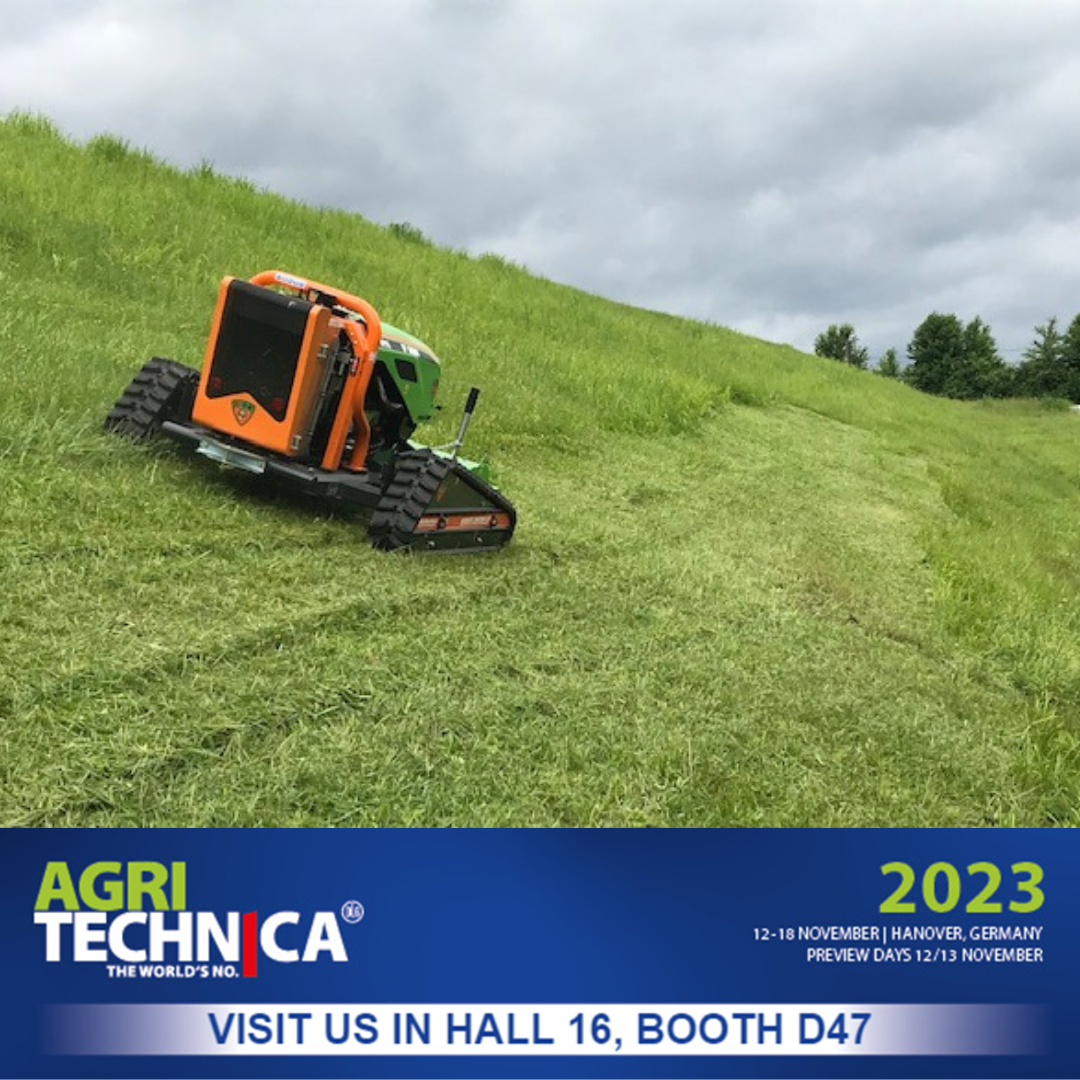The hydraulic circuit of a mower, such as a tractor-mounted or skid-steer mower, is designed to power and control the cutting and maneuvering functions of the mower. Here’s an overview of the typical hydraulic components and their functions in a mower’s hydraulic system:
- Hydraulic Pump: Just like in other hydraulic systems, the hydraulic pump in a mower converts mechanical energy from the engine into hydraulic energy. It pressurizes hydraulic fluid, which is then used to operate various functions of the mower.
- Hydraulic Fluid Reservoir: The reservoir stores the hydraulic fluid that is drawn by the pump. It ensures a steady supply of fluid to the hydraulic system and helps manage temperature and air bubbles.
- Control Valves: Control valves in a mower’s hydraulic system regulate the flow of hydraulic fluid to different components. These valves are responsible for controlling the cutting blades, raising and lowering the cutting deck, and controlling the steering and maneuvering functions of the mower.
- Hydraulic Cylinders: Hydraulic cylinders are used in the cutting deck to raise and lower it to adjust the cutting height. They can also be used for controlling other components, such as pivot mechanisms for steering.
- Hydraulic Motors: Hydraulic motors may be used to power the cutting blades’ rotation. These motors convert the pressurized hydraulic fluid into rotational force, allowing the blades to cut through vegetation.
- Cutting Deck Lift System: This system consists of hydraulic cylinders and valves that control the height of the cutting deck. By adjusting the height, the operator can control the height of the grass being cut.
- Steering System: In some mowers, particularly those with zero-turn capabilities or skid-steer functionality, the steering system is hydraulic. Hydraulic cylinders and valves control the movement of the mower’s wheels or tracks, enabling precise and efficient maneuvering.
- Pressure Relief Valve: Similar to other hydraulic systems, a pressure relief valve is used to prevent excessive pressure buildup in the system, ensuring the safety of the hydraulic components.
- Filters and Strainers: Clean hydraulic fluid is crucial for the proper functioning and longevity of the hydraulic components. Filters and strainers remove contaminants from the fluid, preventing damage to the system.
- Hoses and Fittings: Hydraulic hoses and fittings connect the various components of the hydraulic system, allowing hydraulic fluid to flow between them. Proper maintenance of these components is essential to prevent leaks and ensure smooth operation.
The specific hydraulic functions and components in a mower’s hydraulic system depend on the mower’s design and intended use. For example, a commercial-grade zero-turn mower might have more advanced hydraulic controls for precise steering and cutting adjustments, while a simpler tractor-mounted mower might have a more straightforward hydraulic system primarily focused on controlling the cutting deck and other basic functions.

Discover more about our latest news regarding hydraulic components and system for agriculture machinery at AGRITECHNICA 2023
We are waiting for you at our booth
📅 November 12th to 18th, 2023
📍 Hanover, Germany
Booth Number: HALL 16, STAN D47



